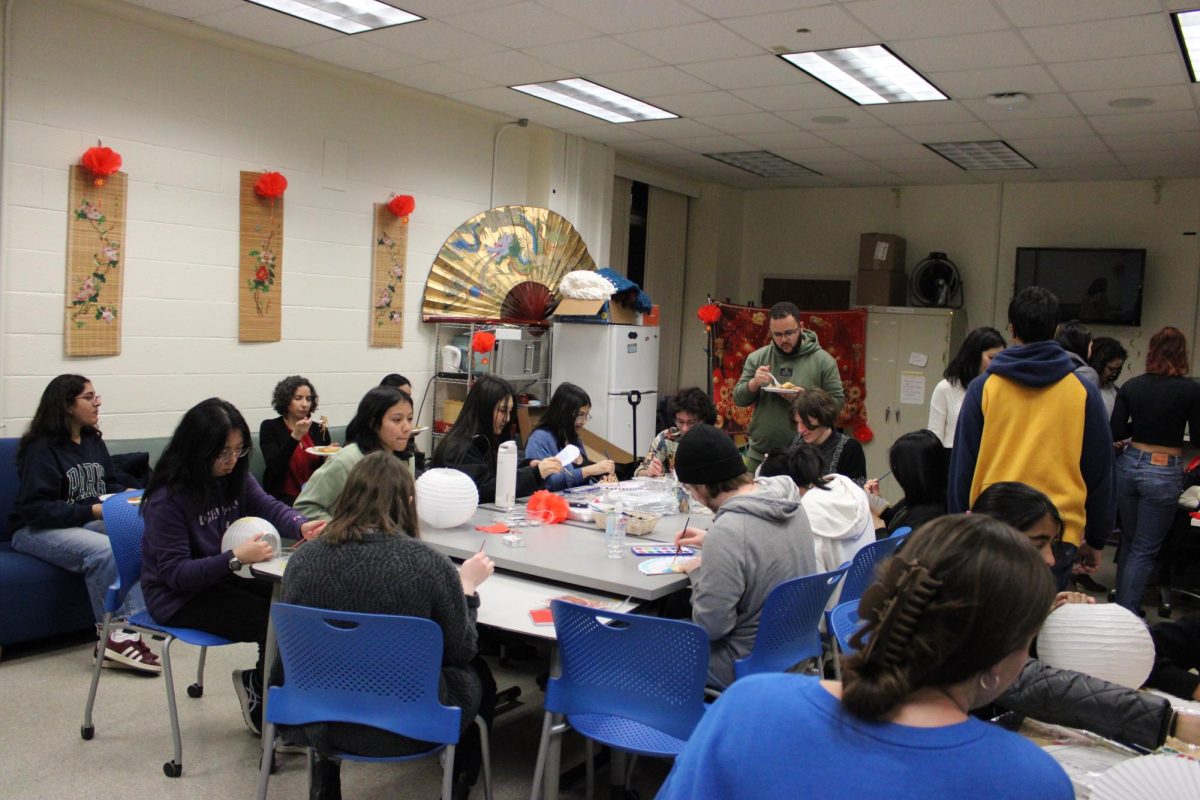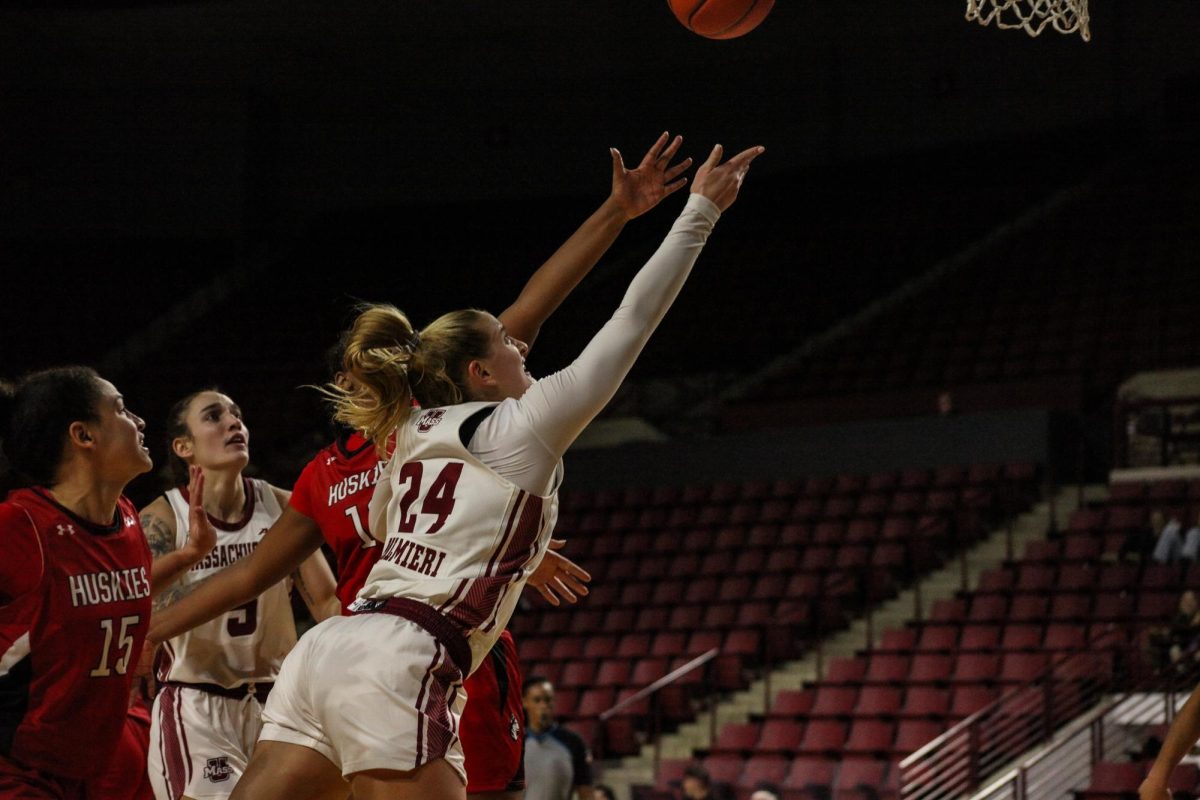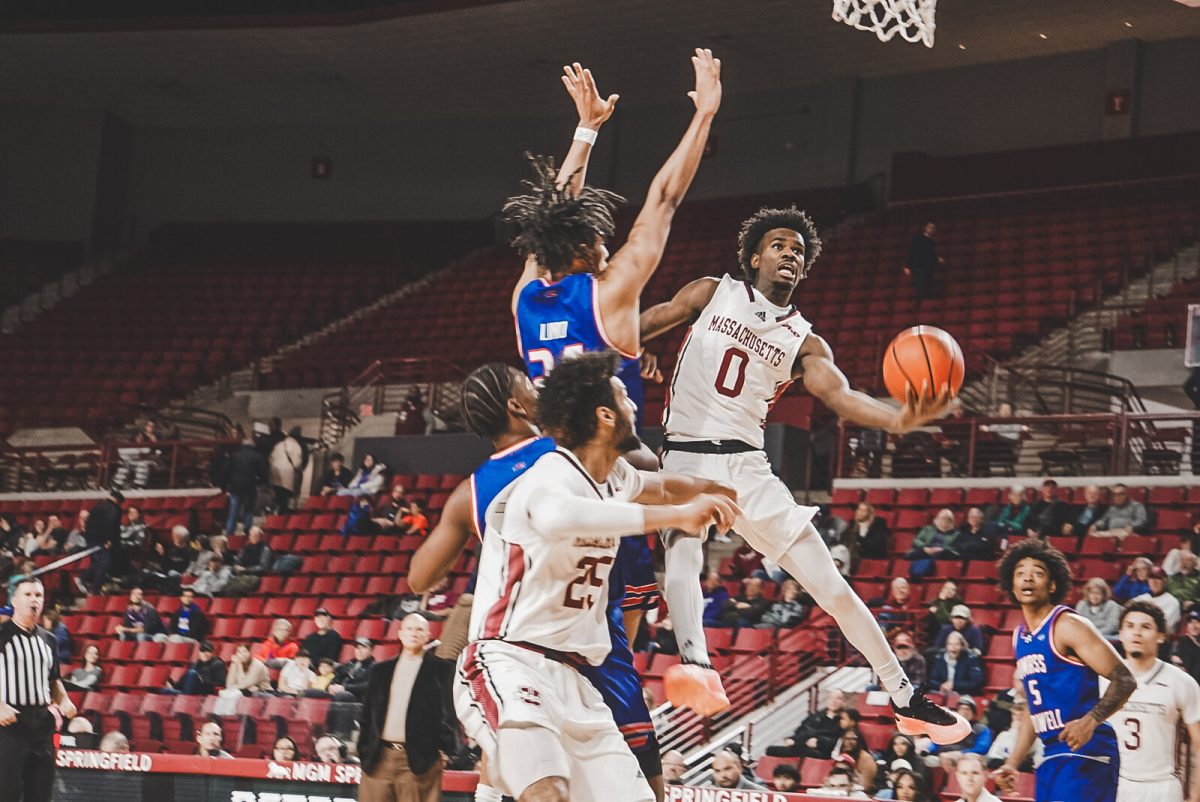On Thursday Feb. 8, the Yuri Kochiyama Cultural Center, a division of the Center for Multicultural Advancement and Student Success (CMASS), hosted celebrations for Lunar New Year. The event, which was held at Bartlett Hall, showcased several traditional aspects of the holiday. Lunar New Year, which follows the cycle of the Chinese zodiac of 12 animals, began on Saturday Feb. 10. It is celebrated in several Southeast Asian cultures, including by the Chinese, Burmese, Vietnamese and South Korean communities. This year, 2024, is the Year of the Dragon, which was last observed in 2012 and will be observed again in 2036.
“Every year, whatever animal [the zodiac] is, that year is linked to that animal, so it’s like, a special year,” Vina Nguyen, a senior public health and psychology major and programming assistant for YKCC said. She explained that the dragon stands for strength, power and luck.
One highlight of Thursday’s event was the traditional food associated with Lunar New Year. According to Michelle Youngblood, associate director for CMASS, each of the foods bear a certain symbolic meaning that makes them an integral part of the Lunar New Year festival.
“So, from what I researched, I found out that tangerines are good luck, so you always give tangerines,” Youngblood said. “Some other foods that [those who celebrate the holiday] have are longevity noodles, to signify long life. Usually, they have dumplings … but then there are the spring rolls and the golden color is for prosperity or good luck.” Youngblood also highlighted the significance of dumplings, which represent coin purses and are said to embody monetary value.
Among the items on Thursday’s menu were spring rolls, dumplings, lo mein (noodles mixed with chopped meat and vegetables) and fortune cookies. Besides the satiating meals, the night also provided guests with red envelopes for luck, watercolors, traditional lanterns and fans. Gathering around the table to modify the decorations allowed for a sense of community amongst the attendees.
“So, for CMASS, we have four different cultural centers, and what we hope to achieve, with regards to these events, is to bring cultural awareness to campus; it’s to bring a sense of community to those on campus who seek community,” Robin Cabral, a senior Portuguese and comparative literature senior and student supervisor for CMASS said. “We welcome everyone who comes to these [events] just to learn about global celebrations.”
Among the guests on Thursday was junior BDIC major Alicia Chhung, who shared some of her general experiences celebrating Lunar New Year. Chhung explained how in Cambodia, the festival is celebrated slightly differently. “I’m Cambodian, so we celebrate in April, but my mom, technically, is part Chinese, so when we celebrate, we welcome the new angel that represents the animal. So, this year’s the dragon,” Chhung said. In Cambodian culture, bananas are given out for good luck instead of tangerines.
Nguyen, who is of Vietnamese origin, also explained how she celebrates the holiday. “I love going to [the] temple with my family. So the night of the Saturday — this year, the 10th — we’ll go to the temple and pray and the monk will give us a tangerine and a red envelope as good luck, and it’s just nice to be with family and wear our traditional dresses; it’s called ‘ao dai’ … We just go and pray, and it’s just a sacred night,” Nguyen said.
The celebrations not only showcased the various elements of Southeast Asian culture, but also brought about a convivial atmosphere between its guests and its facilitators. Wilma Crespo, director of CMASS, hoped the event could be used to benefit the campus community.
“What I enjoy most about events like this is the community-building component and the learning component, since students connect with one another, and also to celebrate parts of their culture that they may not have the ability to [celebrate] while they are on campus. And so, these are also opportunities to contribute to the inclusiveness and the sense of belonging of our students,” Crespo said.
Nguyen also expressed pride in how the event turned out. She explained that cultural events would be able to help new students, including international students, find their footing in the University’s vast community.
“The best part [of the event] is seeing the outcome. You know, it’s always a surprise to see how many new people you meet. A lot of them are just stepping into school, still trying to find their place. We have a lot of international students, which is nice, so they can find a community, and they can make new friends, so that’s the best part,” Nguyen said.
Kalana Amarasekara can be reached at [email protected].




















